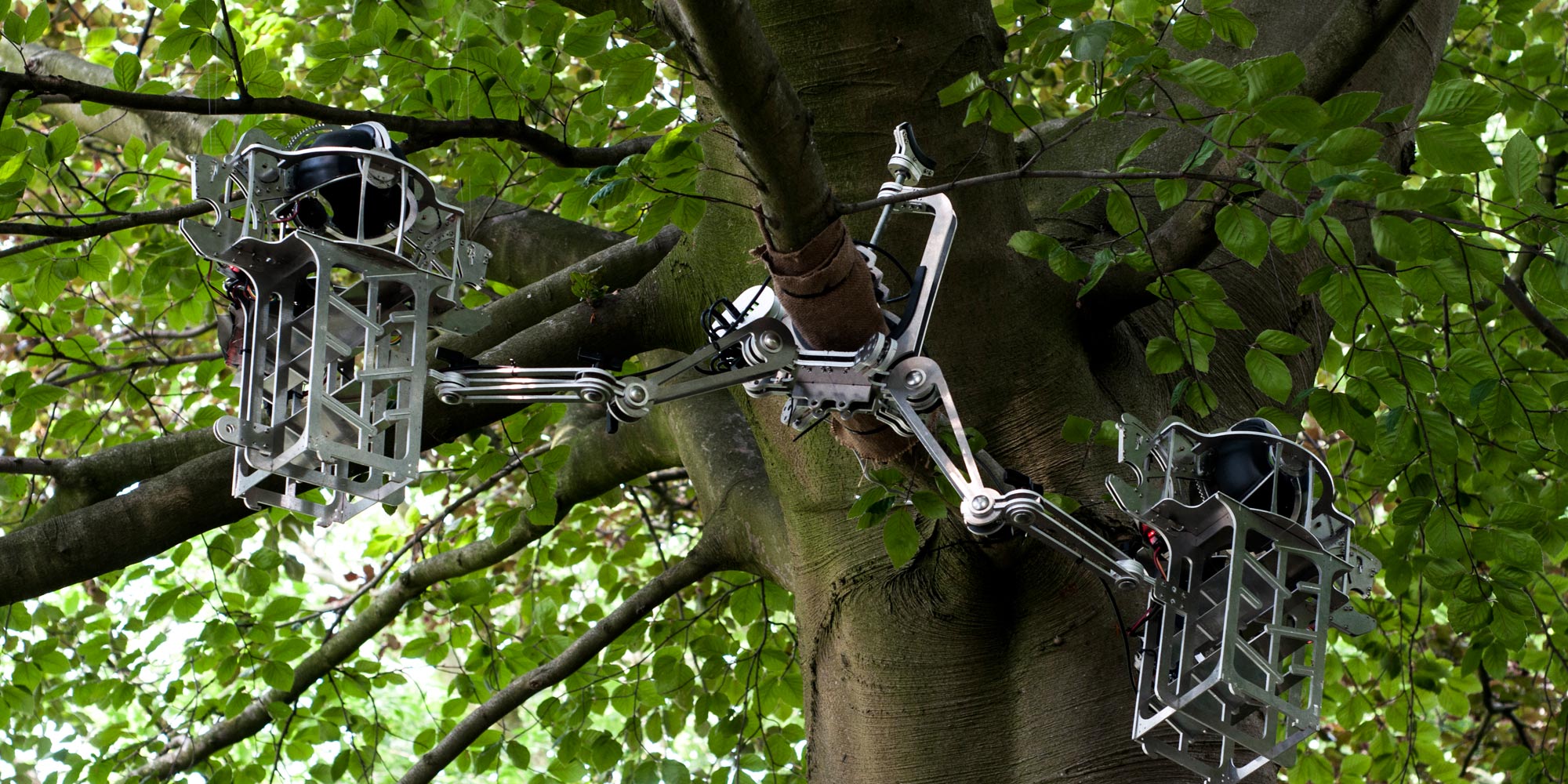Dionaea Mechanica Muscipula
A Diverse Monoculture is a new family of artificial species, which together form a hive of new predators. These predators are used in an attempt to restore the balance within our ecosystem. The first robot predator in the family is the Dionea Mechanica Muscipula, a creature designed to attract and digest oak processionary moths. The Dionaea Mechanica Muscipula is developed to reduce the population of oak processionary moths, an increasing plague.
A Diverse Monoculture
The project A Diverse Monoculture questions the future relationship between mankind and nature: is it possible to deploy robots to find a new balance within our ecosystem? A Diverse Monoculture is a family of several robot species, which together form a hive of new predators. These predators are used in an attempt to restore the balance within our ecosystem. The introduction of the robot predator within the ecosystem offers all the advantages of the predator without a loss of control. The first robot predator in the family is the Dionea Mechanica Muscipula, the creature is designed to attract and digest oak processionary moths. The Dionaea Mechanica Muscipula is developed to reduce the population of oak processionary moths, which are an increasing plague. These moths are active at night and attracted to light. The robot will lure in nearby moths with its light, situated in his mouth. The mouth acts as a trap, which contains the curious moths. Some moths are allowed to remain in the mouth since they spread pheromones that attract other moths. The other moths are processed toward the stomach of the robot where a chemical reaction of the Micro Fuel Cells will power the robot.
Project Credits / Acknowledgements
Ilona Bradford, Bram van Leeuwenstein, Bart Verburg, Texas van Leeuwenstein
Biography
Jip van Leeuwenstein is a speculative designer questioning today’s society. His work balances between design and science. His projects are designed to make the spectator wonder: how did we come to this point? Van Leeuwenstein graduated at the Design Department of the HKU University of the Arts in Utrecht, the Netherlands.





